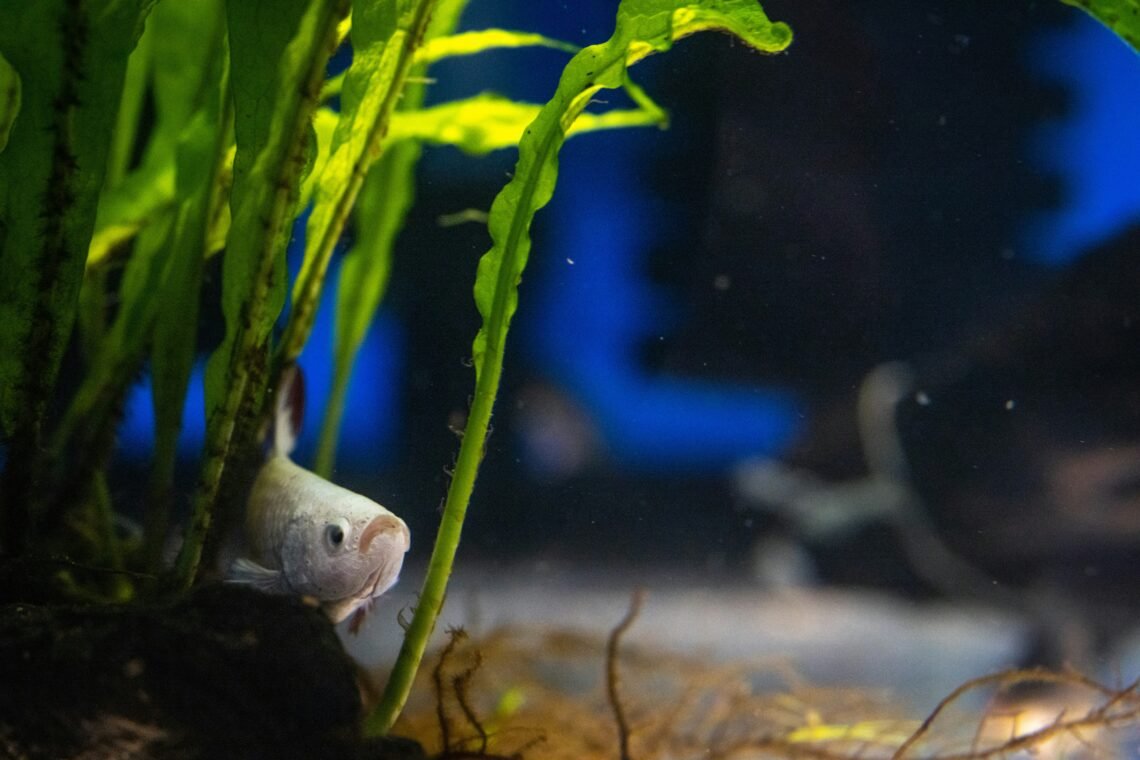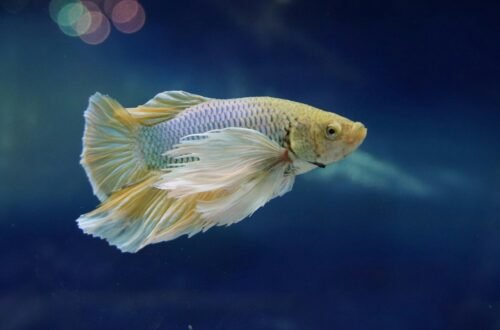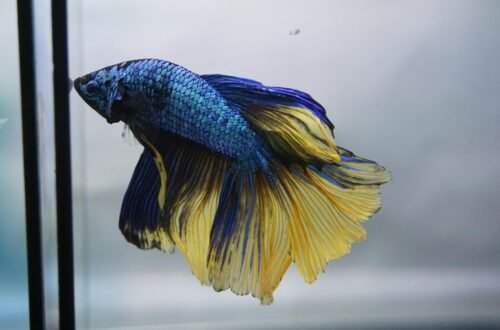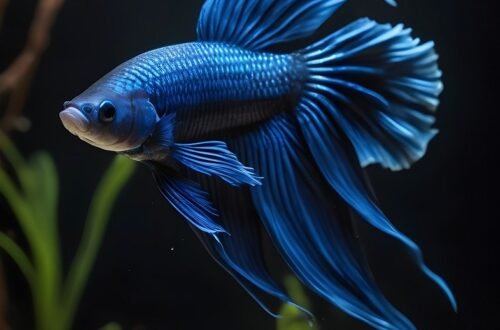Aquatic plants are essential for creating a thriving, balanced, and beautiful aquarium. Whether you’re new to the world of aquascaping or just getting your first tank, understanding the basics of aquatic plants will set you on the path to success. In this beginner’s guide, we’ll explore some of the most popular aquatic plants, how to care for them, and why they are crucial for your aquarium.
What Are Aquatic Plants and Why Are They Important?
Aquatic plants are plants that have adapted to living in water or very moist environments. In an aquarium, they provide more than just aesthetics. They play a vital role in maintaining the health of your tank by:
- Producing Oxygen: Like all plants, aquatic plants perform photosynthesis, releasing oxygen into the water, which is essential for the survival of your fish and other aquatic life.
- Absorbing CO2 and Waste: They absorb carbon dioxide and excess nutrients from fish waste, uneaten food, and other organic matter, reducing harmful substances in the water.
- Providing Shelter: Aquatic plants offer hiding spots for fish, shrimp, and other creatures, helping them feel secure and reducing stress.
- Mimicking Natural Habitats: A well-planted tank replicates the natural habitats of many fish species, promoting natural behaviors and breeding.
Types of Aquatic Plants
Aquatic plants can be categorized into several types based on their growth patterns and requirements. Here’s a breakdown of the most common types:
1. Rooted Plants
Rooted plants grow from the substrate and have roots that anchor them into the gravel or sand. These plants are great for beginners because they are relatively easy to care for.
- Amazon Sword (Echinodorus spp.): One of the most popular aquatic plants, the Amazon Sword has broad, bright green leaves and can grow quite large, making it ideal for the background of your aquarium. It’s a hardy plant that thrives in a range of conditions.
- Cryptocoryne (Cryptocoryne spp.): Known as “Crypts,” these plants are versatile and come in various shapes and sizes. They prefer low to moderate light and are perfect for filling out the mid-ground of your tank.
Floating plants rest on the water’s surface and don’t require substrate to grow. They are excellent for providing shade and reducing algae growth.
2. Floating Plants
- Duckweed (Lemna minor): Duckweed is a tiny, fast-growing plant that forms a green carpet on the water’s surface. It’s easy to care for but needs regular trimming to prevent it from taking over the tank.
- Water Lettuce (Pistia stratiotes): Water Lettuce has rosettes of soft, velvety leaves that float on the surface. It provides excellent shade and is great for aquariums with fish that prefer dim lighting.
3. Stem Plants
Stem plants grow quickly and can be easily propagated by cutting and replanting their stems. They are perfect for adding height and lush greenery to your aquarium.
- Anacharis (Egeria densa): Also known as Elodea, Anacharis is a fast-growing, hardy plant that helps control algae by absorbing excess nutrients. It can grow in a wide range of water conditions and is great for beginners.
- Rotala (Rotala rotundifolia): Rotala has delicate, reddish stems and small leaves that add color to your tank. It prefers high light and CO2 but can adapt to less demanding environments.
4. Mosses
Mosses are low-maintenance and versatile, often used to create a natural, aged look in aquariums. They can be attached to driftwood, rocks, or substrate.
- Java Moss (Taxiphyllum barbieri): Java Moss is a favorite among beginners due to its hardiness and adaptability. It doesn’t require much light or CO2 and can thrive in various conditions, making it ideal for covering rocks or creating moss walls.
- Christmas Moss (Vesicularia montagnei): Named for its resemblance to Christmas tree branches, this moss is slightly more demanding than Java Moss but adds a beautiful, structured appearance to your tank.
Plant Care Basics for Beginners
Caring for aquatic plants involves understanding their basic needs, including light, nutrients, and CO2. Let’s dive into these key elements:
1. Lighting
Light is crucial for photosynthesis, the process by which plants convert light into energy. The amount and quality of light your plants receive will affect their growth rate, color, and overall health.
- Low-Light Plants: Plants like Java Fern and Anubias require less light and are perfect for low-tech setups without CO2 injection.
- High-Light Plants: Plants like Rotala and Dwarf Baby Tears need intense lighting and additional CO2 to thrive.
2. Substrate and Nutrients
The substrate is where rooted plants anchor themselves. It also serves as a reservoir for nutrients. You can choose from various substrates like gravel, sand, or specialized plant soil.
- Fertilization: Many aquatic plants benefit from regular fertilization, whether through liquid fertilizers, root tabs, or nutrient-rich substrates.
3. CO2 Injection
CO2 is vital for plant growth, especially in tanks with high light and demanding plants. While not all plants require CO2 injection, it can significantly enhance growth and vitality.
- DIY CO2 Systems: For beginners, a DIY CO2 system using yeast and sugar can be a cost-effective way to provide extra CO2.
4. Regular Maintenance
Maintaining a planted tank involves regular pruning, trimming, and cleaning. This helps prevent overgrowth, algae outbreaks, and keeps your plants looking their best.
- Algae Control: Algae can be a common issue in planted tanks. Controlling light levels, maintaining good water quality, and introducing algae-eating species like Amano shrimp or Otocinclus catfish can help keep algae at bay.
Choosing the Right Plants for Your Aquarium
When selecting plants for your aquarium, consider factors like tank size, lighting, substrate, and the types of fish you keep.
- For Small Tanks: Opt for plants like Anubias Nana, Cryptocoryne Parva, and Dwarf Hairgrass, which stay small and are easy to manage.
- For Low-Tech Tanks: Choose hardy, low-light plants like Java Fern, Anubias, and Amazon Swords that don’t require CO2 injection or intense lighting.
- For High-Tech Tanks: If you’re ready to invest in CO2 injection and high lighting, plants like Rotala, Monte Carlo, and Red Ludwigia will thrive and provide vibrant colors.
Common Problems and Solutions
Even with the best care, you might encounter some challenges. Here are common problems and how to solve them:
- Yellowing Leaves: This could indicate nutrient deficiencies. Ensure your plants are getting enough iron, potassium, and other essential nutrients.
- Algae Overgrowth: Reduce lighting, improve water circulation, and consider adding algae-eating species to control algae.
- Melting Plants: Some plants, like Cryptocoryne, may “melt” when first introduced due to changes in water parameters. Give them time to adjust, and they will usually recover.
Aquascaping Tips for Beginners
Aquascaping is the art of arranging aquatic plants, rocks, and driftwood in your aquarium to create a pleasing, natural environment. Here are some tips to get started:
- Start Simple: Begin with easy-to-grow plants and gradually introduce more challenging species as you gain experience.
- Plan Your Layout: Before planting, sketch out your design or use aquascaping tools to plan the placement of plants, rocks, and wood.
- Use Layers: Create depth by placing taller plants in the background, medium-height plants in the middle, and short plants or carpeting plants in the foreground.
- Incorporate Hardscape: Driftwood, rocks, and other hardscape elements add structure and contrast to your planted tank, making the overall design more dynamic.
The Joy of a Planted Aquarium
A well-planted aquarium is not only visually stunning but also provides a healthy environment for your fish. Watching your plants grow and thrive is a rewarding experience, and with time and care, your aquarium can become a living work of art.
Starting a planted aquarium may seem daunting at first, but with the right knowledge and preparation, it can be a highly satisfying and relatively easy hobby. By choosing the right plants, understanding their needs, and maintaining your tank regularly, you’ll create a vibrant, healthy environment that both you and your aquatic friends will enjoy.
FAQs
1. Do I need a CO2 system for my aquarium plants?
Not necessarily. Many beginner plants like Java Fern, Anubias, and Amazon Sword can thrive without additional CO2. However, CO2 injection can enhance growth and is required for more demanding plants.
2. How often should I fertilize my aquarium plants?
It depends on the plants and setup. Typically, you should fertilize once a week or after every water change. Rooted plants may also benefit from root tabs placed in the substrate.
3. What’s the best lighting for aquarium plants?
The best lighting depends on the plant species. Low-light plants require less intense lighting, while high-light plants need stronger, more focused light. Full-spectrum LED lights are generally a good choice.
4. Can I grow aquatic plants without a substrate?
Yes, floating plants and some mosses do not require a substrate. However, most rooted plants need a substrate to anchor and access nutrients.
5. How do I prevent algae in my planted tank?
To
prevent algae, maintain a balance between lighting, nutrients, and CO2. Regular water changes, reducing light exposure, and introducing algae-eating species can also help control algae growth.






